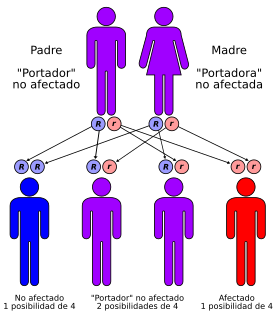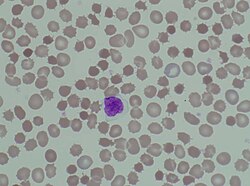Abetalipoproteinemia
abetalipoproteinemia or Bassen-Kornzweig Syndrome, is a rare autosomal recessive disease that affects the digestive tract. from adequately absorbing the fatty components of food through the intestine, which results in the production of greasy stools (steatorrhea), impaired child development, and nerve problems. The disease is characterized by low or absent levels of plasma cholesterol, low-density lipoproteins, and very-low-density lipoproteins. Not to be confused with a beta-lipoprotein deficiency. Characteristic symptoms include fat malabsorption, spinocerebellar degeneration, acanthocytosis, and retinitis pigmentosa.
Causes
This disease is of genetic origin, due to the existence of a mutation in a gene in patients: microsomal triglyceride transfer protein (MTP). This disease affects both sexes, however it is more common in men, reaching 70% of cases.
The mutation causes the organism to be unable to produce blood lipoproteins, including very low-density lipoproteins VLDL (b-100) and chylomicrons (b-48). The reason lies in the inability to make apolipoprotein B (b48 and b100). Altering the functionality of plasma lipoproteins.
Because of this, patients with this syndrome are unable to digest fat, which leads to impaired nerve development (neuropathy) and ataxia.
Clinical picture
Symptoms include delayed development during infancy, abnormal stools (excessively greasy, foul-smelling, and foamy), difficulties with speech, coordination, and balance, and muscle weakness leading to a curvature of the spine.
Gastrointestinal manifestations
These manifestations include diarrhea and deficiency of fat-soluble vitamins. They are evident from childhood. However, diarrhea may not be a prominent symptom later because patients learn to avoid fatty foods. However, fat-soluble vitamin deficiencies continue, because their assimilation and transport are highly dependent on the integrity of the apoB pathway. Conversely, high doses of vitamin A therapy can achieve normal serum levels. This shows that despite impaired intestinal absorption, vitamin A transport by serum retinol-binding proteins is not affected in abetalipoproteinemia.
Hepatic manifestations
- Hepatomegaly for liver steatosis.
- Possible increase in GOT and GPT in blood
- Some cases with cirrhosis
Haematological Manifestations
Acanthocytosis is a hallmark of this disease. Acanthocytes are red blood cells with abnormal spikes due to defective phospholipid cell membrane. They are also seen in liver dysfunction. The erythrocyte sedimentation rate may be very low. Fat malabsorption can lead to deficiencies in iron, folic acid, and lead to anemia. It intervenes in the protection against the damage of free radicals. There may be hemolysis due to lack of vitamin E. Vitamin K participates in the gamma decarboxylation of coagulation factors, an essential step in coagulation. Its deficiency could cause bleeding disorders.
Diagnosis
The treating physician may request a CBC (complete blood count), in which the presence of abnormal red blood cells (with a spiny appearance; acanthocytosis-Burr cells-) will be noted, which is pathognomonic; cholesterol studies, which show a low level of lipoproteins; collection of fecal material, with which the presence of high levels of fats will be verified; and, a genetic test will check for mutations in the APOB or MTP genes.
Treatment
Treatment consists of following a low-fat diet to avoid digestive symptoms, and the use of vitamin supplements. Because fats are an essential part of development, long-chain triglycerides are replaced by medium-chain triglycerides., which are absorbed differently by the intestine.[citation needed]
Forecast
The results of treatment vary greatly, depending on the degree and extent of neurological problems. In very severe cases, an irreversible neurological disease occurs around the age of 30.[citation needed]
Contenido relacionado
Digestive system
Human pregnancy
Toxoplasma gondii
Brain stem
Erythrocyte

